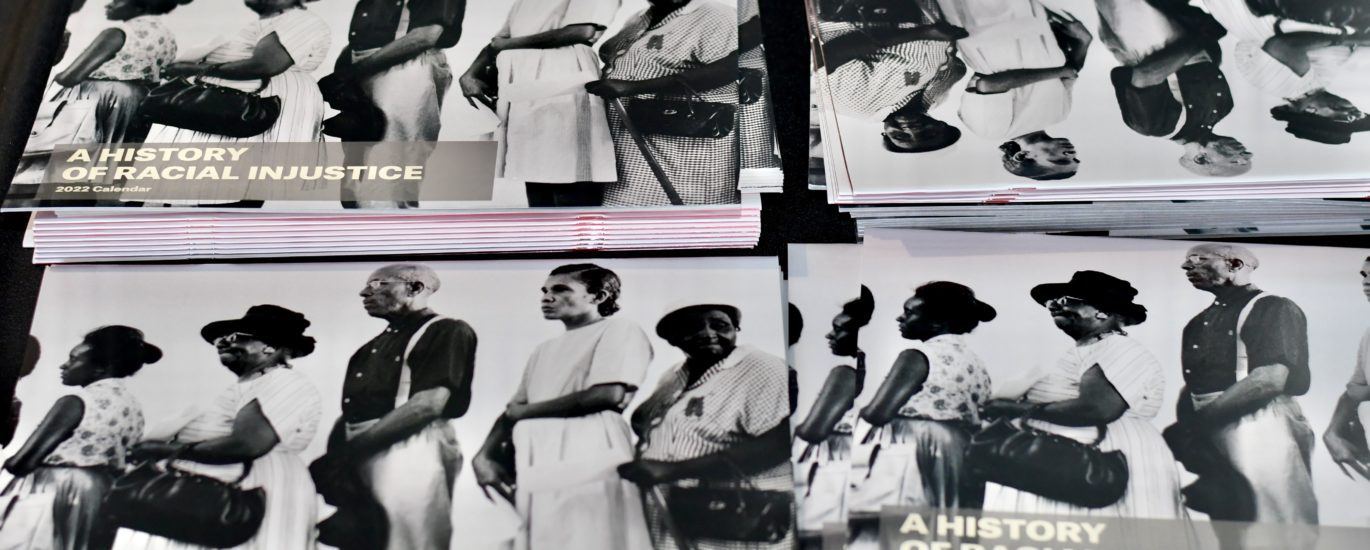By Nancy J. Fairley
On Nov. 10th I visited the Legacy Museum: From Enslavement to Mass Incarceration, located in Montgomery, Ala. I am a retired anthropologist; during my career I specialized in Atlantic African peoples and cultures, both continental and diasporic. In addition to teaching and conducting research on these populations, I have also spent countless hours visiting ethnographic, historical, and fine arts museum exhibitions dealing with Atlantic Africans. I can assure you with great certitude that never has any museum visit been so impactful in my life.
Throughout the three-hour visit of the Legacy Museum I kept thinking, this is my first time visiting a museum that viewed the African American Experience from Our perspective! That is, the curators chose not to depersonalize the history and culture of African Americans. Far too often I have visited museums that narrate African American experiences in such a way that WE (African Americans) feel like spectators. For the first time in my life, I felt like an eyewitness to Our Collective History of Violence, Trauma and Struggle in the United States of America. The exhibition spoke to every aspect of my humanity: intellect, emotions, spirituality, physicality and artistry. During the three hours inside the museum I cried, rejoiced, prayed, and learned new information!
When museums depersonalize representations of African Americans in the USA, they are presenting a fragmented version of our identity, memories, and consciousness—both Africans and Europeans. Most importantly the depersonalization of African American experiences aids the larger society in denying the violence and repressive conditions which it has imposed on Us for more than four centuries. The denial of the impact of European American violence and oppression, from slavery to present, allows them to be dismissive of the collective trauma my people live even today. This gives them permission to make casual statements such as ‘Slavery is long past” or “My people did not own slaves” or “We came after the Civil War.” By the way, scholars ignore the fact that the depersonalization of African American experiences is reflected in the naming of the trade. Scholars call it the Trans-Atlantic Slave Trade! A name derived from the ocean, not the products or the traders. Please note the famous spice and silk trade originating in the East is named for the items being traded…not the terrain. The trade in enslaved Africans must reflect reality! A specific group of people created this lucrative and barbaric trade—We know who they are! This economic activity which enriched hundreds of thousands of people should be referred to as the European Slave Trade!
Since the Legacy Museum does not depersonalize African American experiences it is clear to the visitors who and what is responsible for the violence and trauma this group endures, both past and present. Let’s examine how the museum presents the public lynching of African Americans. There is a wall in one gallery covered with photos and newspaper articles on public lynching of African Americans. What is a very clear take away from this lynching wall? The lynching of African Americans has always been a national pastime in America! This barbaric behavior was never restricted to those inhabiting the land of the confederacy. Our European brethren, from the East Coast to the West, used this form of violence to control African Americans. Once I left the lynching wall, I entered the adjacent gallery which has hundreds of jars of soil taken from lynching sites all across the country. Each jar bears the name of a sister or brother who fell victim to one of America’s pastimes—lynching!
Allow me to share my reactions to other parts of the exhibitions at the Legacy Museum. Entrance into the first gallery actually took my breath away. A video projects an image of the Atlantic Ocean on an entire wall. The crashing waves of dark water gave me the feeling of being sucked down into the ocean. This powerful imagery pays homage to the hundreds of thousands of Ancestors who died crossing the Atlantic. Most importantly, it reminds us that while crossing the Atlantic Ocean in the filthy hull of slave ships our Ancestors created Diasporic African cultures. An 18th century European man, in a South American port city, reported watching newly-arrived enslaved Africans disembarking. He was astonished at the number of these Africans who had moon and star designs on their heads. Imagine creating artistic coiffures on a slave ship! What a testament to life!
Once I left the gallery with the crashing waves, I entered the gallery of Enslaved African Heads. The artist made these clay heads based on living Ghanaians and even stored them, for a few days, in one of Ghana’s slave dungeons. Several inches of water gently flow back and forth around these heads, representing different age groups and nationalities. The same familiar and deep wave of sadness that had washed over me when I first visited a slave dungeon in 1972 hit me like a ton of rocks. I was 22 years old at that time; yet 50 years later my reaction is just as intense. Silent tears cascaded down my cheeks; and I felt no desire to wipe them away.
The museum’s use of holograms is brilliant! Imagine walking up to a replica of slave pens and in one is the image of a small girl crying. She had been separated from her mother, awaiting her destiny on the auction block. Suddenly I am back in my youth listening to my mother as she tells her children the story of how a European slave holder sold his son. Sold the boy whom he sired with an enslaved woman. That little 12-year-old boy was my great grandfather!
Twenty minutes later I walk into the gallery that deals with unlawful enslavement and forced labor following Emancipation. I had taught about this era of violence so there were no surprises. However, before I left that gallery, I was overwhelmed with memories of my mother’s brother, Oscar, who disappeared in the 1930s. Uncle Oscar wanted a good job that paid real wages so he left home to seek his fortune. After the third letter his family never heard from him again. My mother’s eyes would swell with tears when recounting the sadness of her parents because their son never returned home. My mother said her parents died believing, “them Crackers stole our boy and worked him to death.” In light of American history, my grandparents’ assumption about the fate of their son is quite reasonable.
Lastly, I want to share my appreciation for the fact that the last galleries are filled with visual art, responses to or reflections of our history in America. These cultural artistic responses helped me understand how deeply cathartic was this visit to the Legacy Museum: From Enslavement through Mass Incarceration.
Nancy J. Fairley is Professor Emeritus of Anthropology of Davidson College.





The article by Professor Nancy Jane Fairley, “I found US at the Museum,” is very Insightful and informative. As a result, I have placed the Legacy Museum on my list of places of interest to visit.
Kudos to my college classmate!
Grafton Edgar Beckles II, Esq.